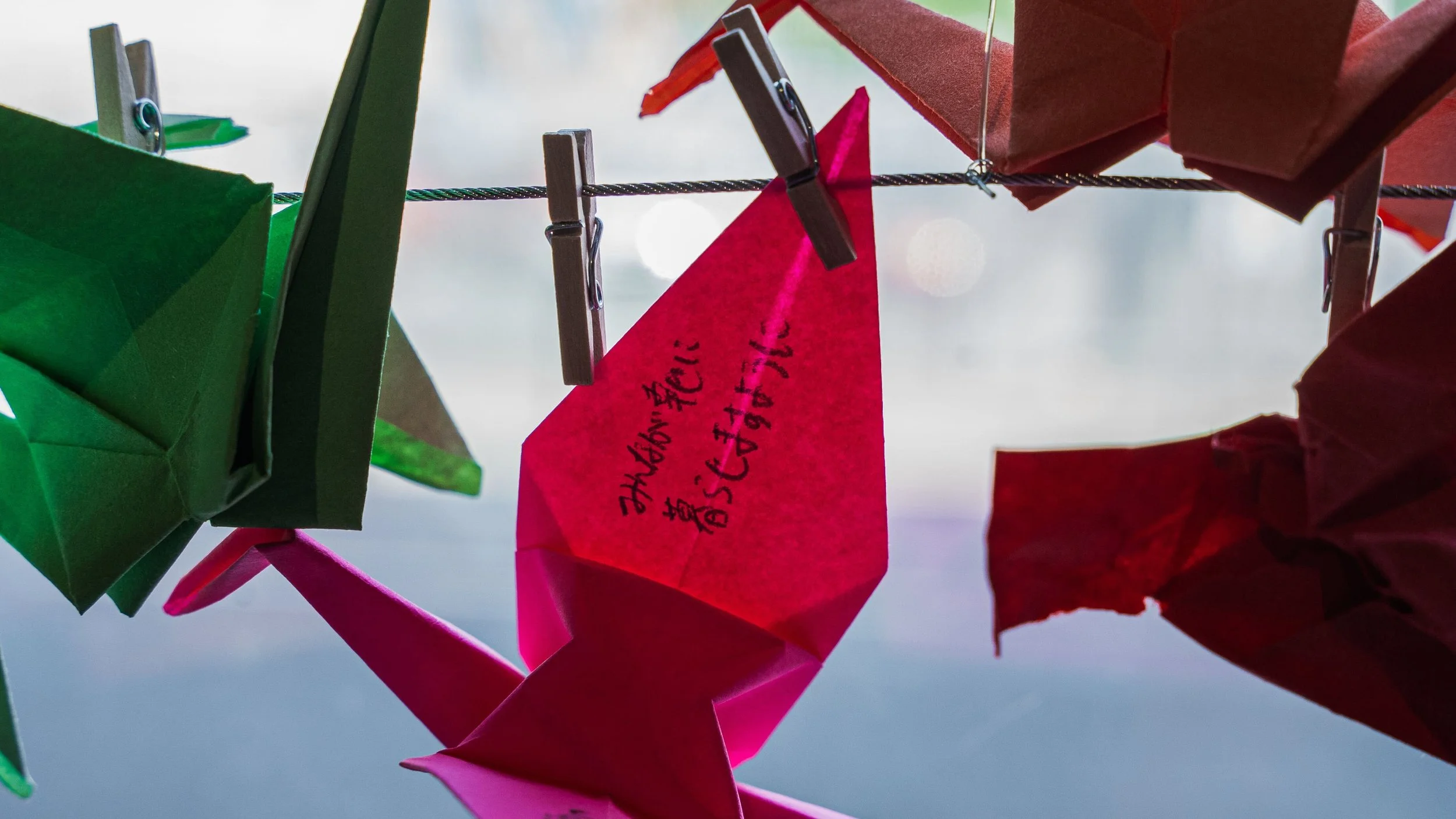Crane by Crane: Healing Through History in Portland’s Japanese American Museum
By Zoey Weesner and Jordan Martin
Japantown, also known as Nihonmachi, was once a thriving neighborhood in Northwest Portland, serving as a vibrant center for the city's Japanese American community. Near the train station, the neighborhood bustled with businesses, schools and cultural life — a place where families built their futures and traditions thrived. World War II changed everything: Japanese Americans were forcibly removed and incarcerated, tearing apart the fabric of the community and leaving wounds that still echo through the city today.
In the heart of what remains, the Japanese American Museum of Oregon (JAMO) works to preserve this history and tell the nearly erased stories.
“Our museum is here to show how the community has moved on and continues to contribute to American history after the war,” Lauren Sadataki, the Philanthropy Manager at JAMO, said. “It's really important for people to learn these lessons, to show that we shouldn't have this history repeat itself, and celebrate what can be accomplished after such a terrible experience.”
Japanese families in Japantowns in the U.S. maintained strong social bonds, especially during cultural observances like the New Year, but faced severe prejudice following the attack on Pearl Harbor in 1941.
This prejudice culminated in Executive Order 9066, which led to the internment of over 3,600 Japanese Americans in Portland, where they faced hate and discrimination.
“A lot of people don’t even know there was a Japantown in Portland,” Erin Schmith, the Marketing and Communications Coordinator for JAMO, said. “The forced incarceration of Japanese Americans across the West Coast completely destroyed this as a Japantown, and while many people did return to Portland, this area never saw the same clustering of business and community as they did before.”
This summer, the museum deepens that mission with a powerful exhibition marking the 80th anniversary of the atomic bombing of Hiroshima with Sadako and Paper Cranes, a book written by Eleanor Coerr, on loan from the Hiroshima Peace Memorial Museum. The exhibit tells the story of two-year-old Sadako Sasaki, who lived through the bombing but later died from leukemia caused by radiation exposure.
“It’s a very poignant example of the horrors of the nuclear war,” Schimth said. “It isn’t the immediate aftermath; it continues to create harm, to echo in people's minds.”
During Sadako's time in the hospital, her best friend, Chizuko, came to visit her and gifter her origami paper. She explained that the crane, a sacred bird in Japan, lives for a hundred years, and if a sick person folds 1,000 paper cranes, that person will soon recover. Inspired by the legend, Sadako decided to fold 1,000 cranes and pray for her recovery.
As her health declined, Sadako folded 644 paper cranes, creating symbols of hope and healing, before she passed on October 25, 1955. Her classmates then folded the remaining 356 to reach her goal and fulfill her dream of having 1,000 cranes for a wish to get better.
Her classmates later helped build the Children’s Peace Monument in her honor, now a global symbol of peace and youth resilience.
In connection with the exhibition, the museum has commissioned works from local artists, including Erin Shigaki, Lynn Yarne, Marie Okuma Johnston, Maya McDarragh, and six students from Grant High School who have created responses to Sadako’s story.
“We wanted to bring the significance to today and see what local artists have to say on this topic,” Schimth said. “What we want people to take away from this is being able to really connect with the youth perspective on war, and how that impacts children specifically.”
The pieces on display within the walls of the museum invite visitors to reflect on themes of memory, loss, and the enduring call for nuclear disarmament, continuing the museum’s role not only as a preserver of the past but as a catalyst for dialogue in the present.






